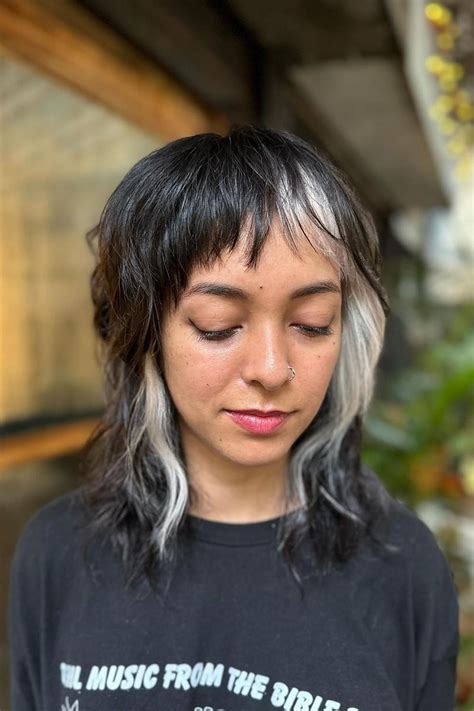Prepare to unleash your inner rebel with the wolf cut, the latest hairstyle trend that has taken the fashion and beauty world by storm. This hybrid cut, a fusion of the mullet and the shag, offers a unique blend of edginess and versatility, making it suitable for various face shapes, hair textures, and personal styles.

The Anatomy of a Wolf Cut
At its core, the wolf cut is characterized by:
- Layered, choppy ends inspired by the feathered layers of the 1970s shag.
- Blunt bangs that frame the face and add a touch of drama.
- Disconnected layers at the crown of the head that create volume and texture.
These elements combine to form a haircut that is both bold and flattering, adding edge to any ensemble.
Why Wolf Cuts Are Trending
The wolf cut has gained popularity for several reasons:
- Versatility: It can be adapted to suit different hair types and face shapes, making it a universal style.
- Edgy Aesthetic: The choppy layers and blunt bangs evoke a sense of rebellion and nonconformity.
- Low Maintenance: Despite its layered appearance, the wolf cut is relatively low-maintenance, requiring occasional trims to maintain its shape.
- Celebrity Endorsement: Numerous celebrities, including Billie Eilish, Miley Cyrus, and Taylor Swift, have embraced the wolf cut, further boosting its popularity.
Who Should Consider a Wolf Cut?
The wolf cut is a potential match for individuals seeking:
- A bold and edgy hairstyle.
- A cut that adds volume and texture to their hair.
- A style that is versatile and can be customized to suit their preferences.
- A haircut that is relatively low-maintenance.
However, it may not be the ideal choice for those with:
- Very fine or thin hair, as it may not provide enough weight to support the layers.
- Naturally curly or coily hair, as the layers may be difficult to define and style.
- A round face shape, as the blunt bangs and choppy layers can accentuate roundness.
Styling a Wolf Cut
To achieve the perfect wolf cut, follow these steps:
Step 1: Get a Consultation
Consult with a professional hairstylist to determine the best wolf cut variation for your hair type, face shape, and personal style.
Step 2: Cut and Layer
Have your hairstylist create the wolf cut structure, including the blunt bangs and disconnected layers. Ensure the layers are blended seamlessly to create a cohesive look.
Step 3: Style with Products
Apply a volumizing mousse or root lifter to the roots of your hair to create volume and hold. Use a hairspray to set the style and prevent frizz.
Step 4: Experiment with Textures
The wolf cut allows for endless styling possibilities. Experiment with different textures, such as waves, curls, or braids, to create a unique and customized look.
Variations of the Wolf Cut
To cater to diverse preferences, the wolf cut can be adapted into several variations:
- Long Wolf Cut: Longer layers and less choppiness, ideal for those seeking a more elegant and feminine look.
- Short Wolf Cut: Shorter layers and more disconnected areas, creating a bolder and more androgynous style.
- Curly Wolf Cut: Designed for curly hair, with more defined layers to enhance volume and movement.
- Wolf Cut with Undercut: Features an undercut at the nape or sides of the head, adding an edgy and modern twist.
Table 1: Wolf Cut Variations
| Variation | Characteristics | Suitability |
|---|---|---|
| Long Wolf Cut | Longer layers, less choppiness | Elegant, feminine |
| Short Wolf Cut | Shorter layers, more disconnection | Bold, androgynous |
| Curly Wolf Cut | Defined layers | Curly hair types |
| Wolf Cut with Undercut | Undercut at nape/sides | Edgy, modern |
Wolf Cut for Different Face Shapes
The wolf cut can be adapted to flatter various face shapes:
- Oval Face: Any wolf cut variation can enhance the natural balance of an oval face.
- Round Face: A wolf cut with side-swept bangs and longer layers can help elongate the face.
- Square Face: A wolf
